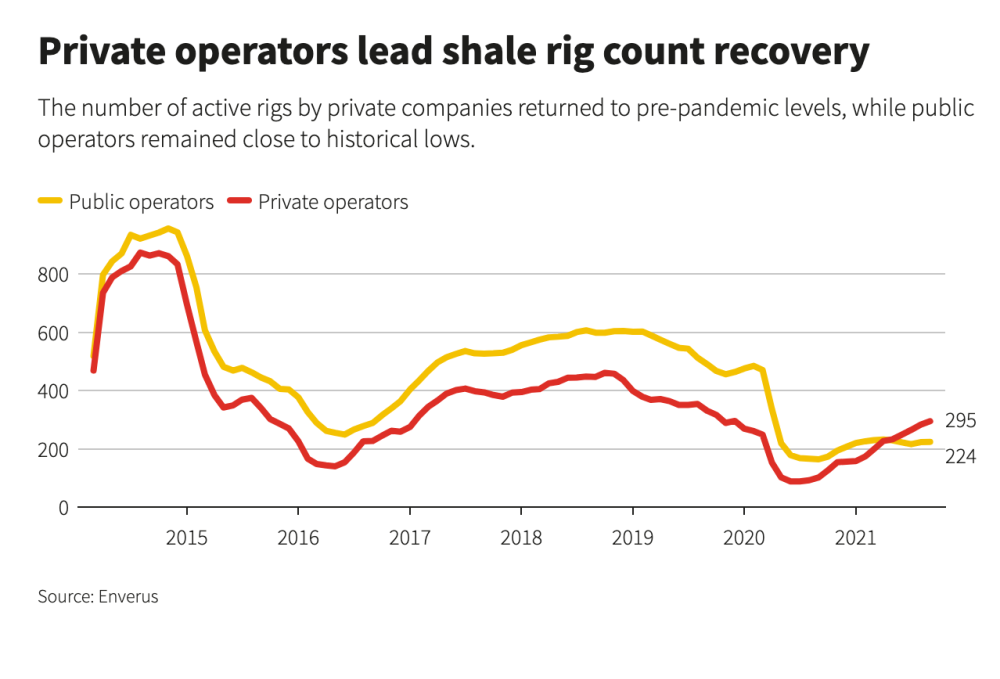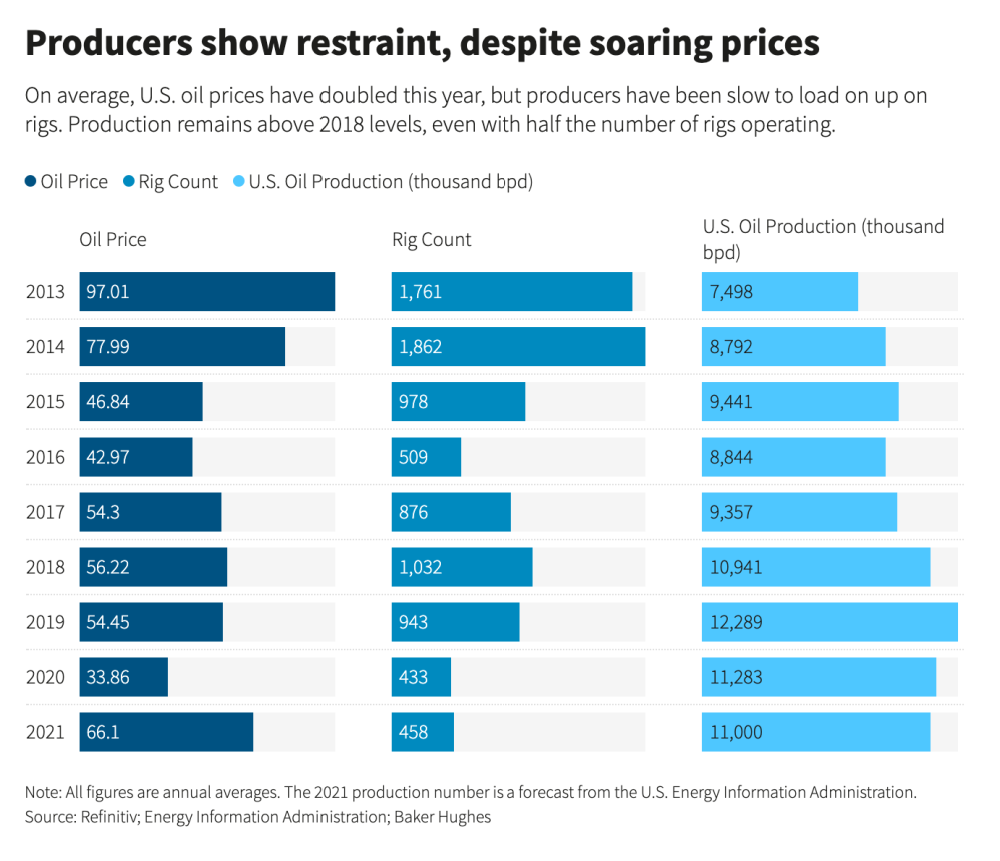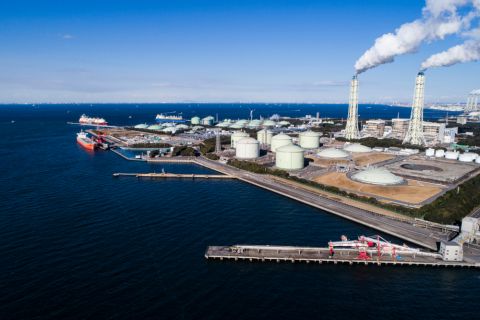U.S. shale producers’ decision this year to resist pumping more oil even as prices surge could be nearing an end, according to company executives.
Several major oil companies, including BP Plc, Chevron Corp. and Exxon Mobil Corp., are planning to increase output or shale spending next year, undercutting OPEC’s tight supply management that has pushed crude oil prices above $80 a barrel as global demand for fuel rebounded more swiftly than many anticipated.
“As oil prices rise, it's increasingly likely that oil production growth resumes,” said Josh Young, chief investment officer of energy investor Bison Interests. The gains, however, will remain below the rate of pre-COVID-19 increases, he said.
Overall U.S. crude production rose last week to 11.5 million bbl/d, according to latest U.S. Energy Department figures, inching closer to its peak of about 13 million bbl/d before the coronavirus pandemic hit last year. More than 70% of U.S. output comes from shale production.
The planning uptick in shale will come from larger companies and particularly from the Permian Basin, the top U.S. shale field. The change follows pressure from the White House for more production as retail fuel prices rise.
Permian output is forecast to hit 4.89 million bbl/d in November, just below the peak 4.91 million bbl/d of March 2020 before the pandemic hit. The remaining shale regions, however, have lagged, producing a quarter less oil than at their peak in early 2020.
On Nov. 2, BP said it would increase spending on its U.S. shale holdings next year by $500 million. Exxon Mobil last quarter grew shale output by 30% to about 500,000 bbl/d and could add two more drilling rigs ahead, its chief executive said last week. Chevron this quarter will add two rigs and well-completion crews, adding to output in early 2021.

Hess Corp. plans to increase its shale output by up to 8% this quarter over last after adding a rig in North Dakota’s Bakken shale field.
U.S. oil production overall will rise 200,000 bbl/d through the end of this year, estimated Reid I’Anson, a senior commodity analyst at consultancy Kpler. That rate, however, is below the pace that companies added output during periods of high prices.
The return of drilling and spending by the biggest oil companies is being closely monitored, particularly as OPEC and allies meet Nov. 4 to review supply additions. The producer group is expected to continue its 400,000 bbl/d monthly increase, as Europe grapples with energy shortages and soaring prices.

Not all U.S. producers say they will move output higher. Permian Basin producer Diamondback Energy Inc. on Nov. 2 vowed to keep production flat next year, and let OPEC complete its monthly schedule. The company twice lowered its capital spending budget this year, a 10% decline since April.
“The industry has tried a market share war with OPEC before and it didn’t work out,” Diamondback CFO Kaes Van’t Hof said.
Recommended Reading
CERAWeek: Tecpetrol CEO Touts Argentina Conventional, Unconventional Potential
2024-03-28 - Tecpetrol CEO Ricardo Markous touted Argentina’s conventional and unconventional potential saying the country’s oil production would nearly double by 2030 while LNG exports would likely evolve over three phases.
Argentina's Vaca Muerta Shale Formation Drives Record Oil Production in February
2024-03-22 - Argentina's Neuquen province hit a record for daily oil production in February.
Freeport LNG Down One Train After Texas Freeze
2024-01-29 - Freeport LNG’s 15 mtpa three-train export facility on the Texas Gulf Coast will be without its Train 3 for at least one month, due to an electrical issue during the recent Texas freeze.
Sempra Targets Summer 2025 for Commercial Start of ECA LNG Phase 1
2024-03-06 - Sempra is targeting the summer of 2025 as the commercial operations date for its 3.25 mtpa (0.43 Bcf/d) nameplate capacity Energía Costa Azul LNG Phase 1 project, located in Ensenada in Baja California, Mexico.
Report: Freeport LNG Hits Sixth Day of Dwindling Gas Consumption
2024-04-17 - With Freeport LNG operating at a fraction of its full capacity, natural gas futures have fallen following a short rally the week before.




